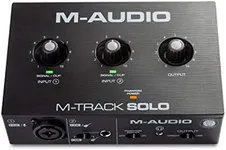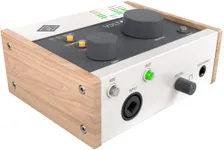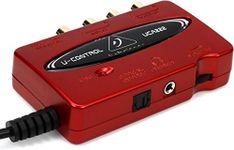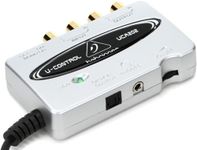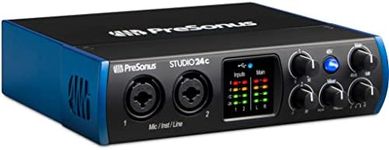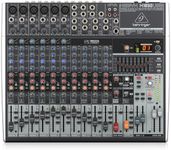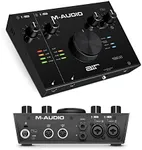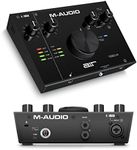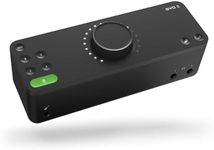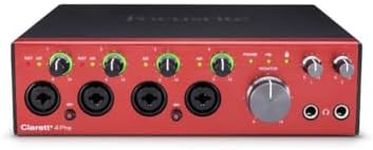Buying Guide for the Best Audio Interface For Mac
Choosing the right audio interface for your Mac can significantly enhance your music production, podcasting, or any other audio-related tasks. An audio interface is a device that allows you to connect microphones, instruments, and other audio equipment to your computer, converting analog signals into digital data that your Mac can process. To find the best fit for your needs, consider the following key specifications and how they align with your intended use.ConnectivityConnectivity refers to how the audio interface connects to your Mac. Common options include USB, Thunderbolt, and FireWire. USB interfaces are widely compatible and generally more affordable, making them suitable for most users. Thunderbolt interfaces offer faster data transfer rates and lower latency, ideal for professional audio work. FireWire is less common but still used in some professional setups. Choose based on the ports available on your Mac and the level of performance you need.
Number of Inputs and OutputsThe number of inputs and outputs determines how many devices you can connect simultaneously. If you’re a solo musician or podcaster, a 2-in/2-out interface might suffice. For recording bands or more complex setups, you might need an interface with 8 or more inputs and outputs. Consider your current and future needs to ensure you have enough connectivity options.
PreampsPreamps amplify the signal from microphones and instruments to a level that can be processed by your Mac. High-quality preamps provide cleaner, more accurate sound. If you’re recording vocals or acoustic instruments, look for interfaces with good preamps. For basic tasks, standard preamps will be sufficient. Research user reviews and specifications to gauge preamp quality.
Phantom PowerPhantom power is necessary for condenser microphones, which require an external power source. Most audio interfaces offer phantom power, but it’s important to check if you plan to use condenser mics. Ensure the interface provides +48V phantom power to accommodate these microphones.
Sample Rate and Bit DepthSample rate and bit depth affect the quality of your recordings. Higher values provide better sound quality but require more processing power and storage. Common sample rates are 44.1kHz and 48kHz, suitable for most users. Professionals might opt for 96kHz or higher. Bit depth options include 16-bit and 24-bit, with 24-bit offering better dynamic range. Choose based on your quality requirements and computer capabilities.
LatencyLatency is the delay between input and output signals. Lower latency is crucial for real-time monitoring and recording. Interfaces with direct monitoring features can help reduce latency. If you’re doing live recordings or need precise timing, prioritize interfaces with low latency.
Build Quality and PortabilityBuild quality affects the durability and longevity of the interface. Metal chassis are more robust than plastic ones. If you need to travel or record on location, consider a portable interface that’s compact and lightweight. Assess your usage environment to determine the importance of build quality and portability.
Software CompatibilityEnsure the audio interface is compatible with your Mac’s operating system and your preferred digital audio workstation (DAW). Some interfaces come with bundled software, which can be a bonus. Check for driver support and any additional software features that might enhance your workflow.

